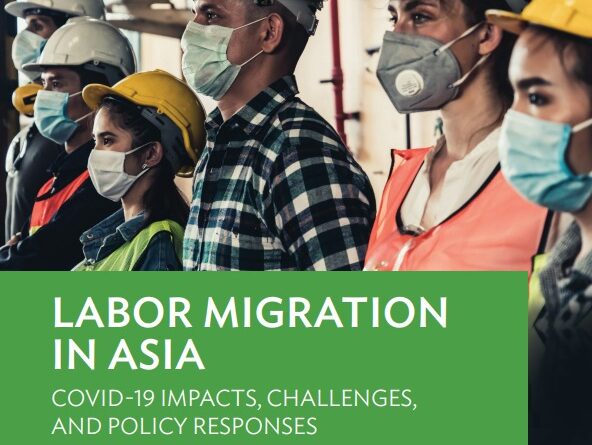Labor Migration in Asia. COVID-19 Impacts, Challenges, and Policy Responses
By ADBI Institute, OECD & ILO
International migration is a difficult megatrend to predict. Yesterday, the COVID-19 pandemic; today, the Ukrainian refugee crisis; these have had and will have unpredictable long-lasting impacts on the international cross-border movements of tourists and migrant workers. After two years of a global pandemic, the world is still in the midst of a disruption of migration patterns. The cascade of border closures and the wild swings in economic activity upended predictions about labor migration. Deployment from the 12 main origin countries in Asia fell by 44% between 2019 and 2020. Only a few countries saw deployment rebound in 2021, and none to the 2019 level. Remittances to Asian countries declined in 2020, but less than worker outflows, and recovered in 2021. Meanwhile, the mobility of migrant workers and related remittance flows have deviated from the previous trends. Asian labor migrants have been among the most affected, both in terms of their opportunities for employment and in terms of the health conditions they face due to their workplace and residential conditions. The pandemic has certainly complicated the lives of migrant workers: unexpected loss of income and early and unplanned repatriation, and restrictions on departure. Similarly, it has raised challenges for policy makers in both origin and destination countries, who have had to deal with declines and shifts in demand, organization of repatriation and new travel protocols, and expanded policy focus on epidemiological dimensions of international labor mobility, such as testing, quarantine, and supervision of lodging.
Get the book here
333 views










